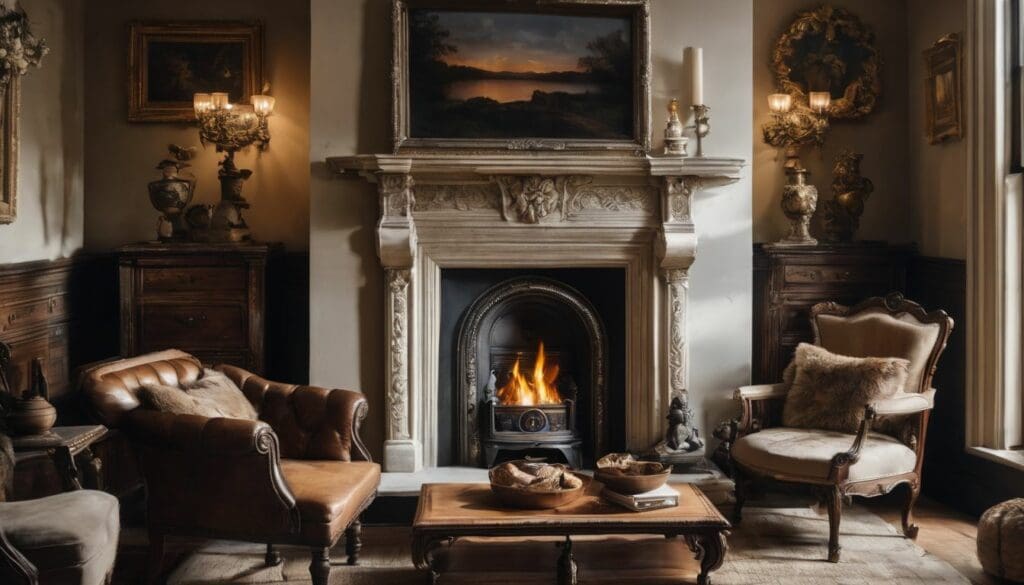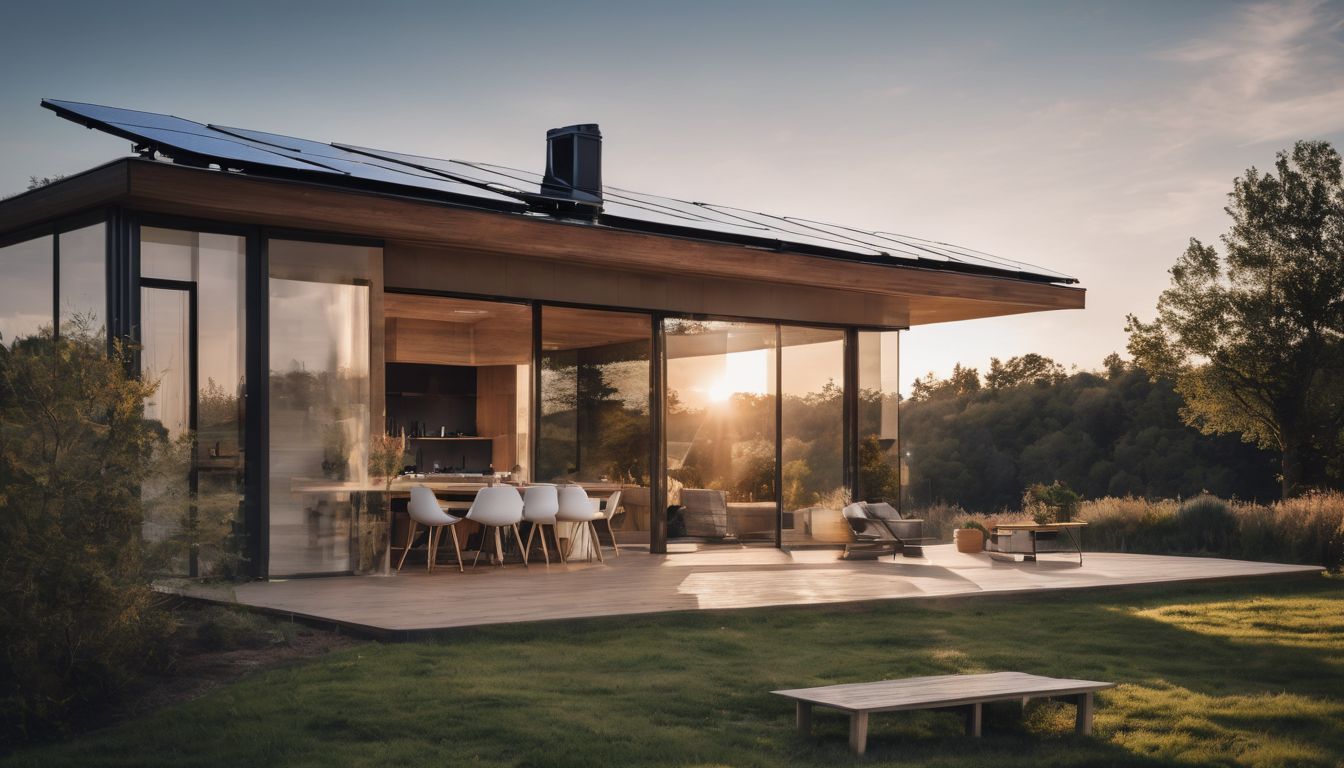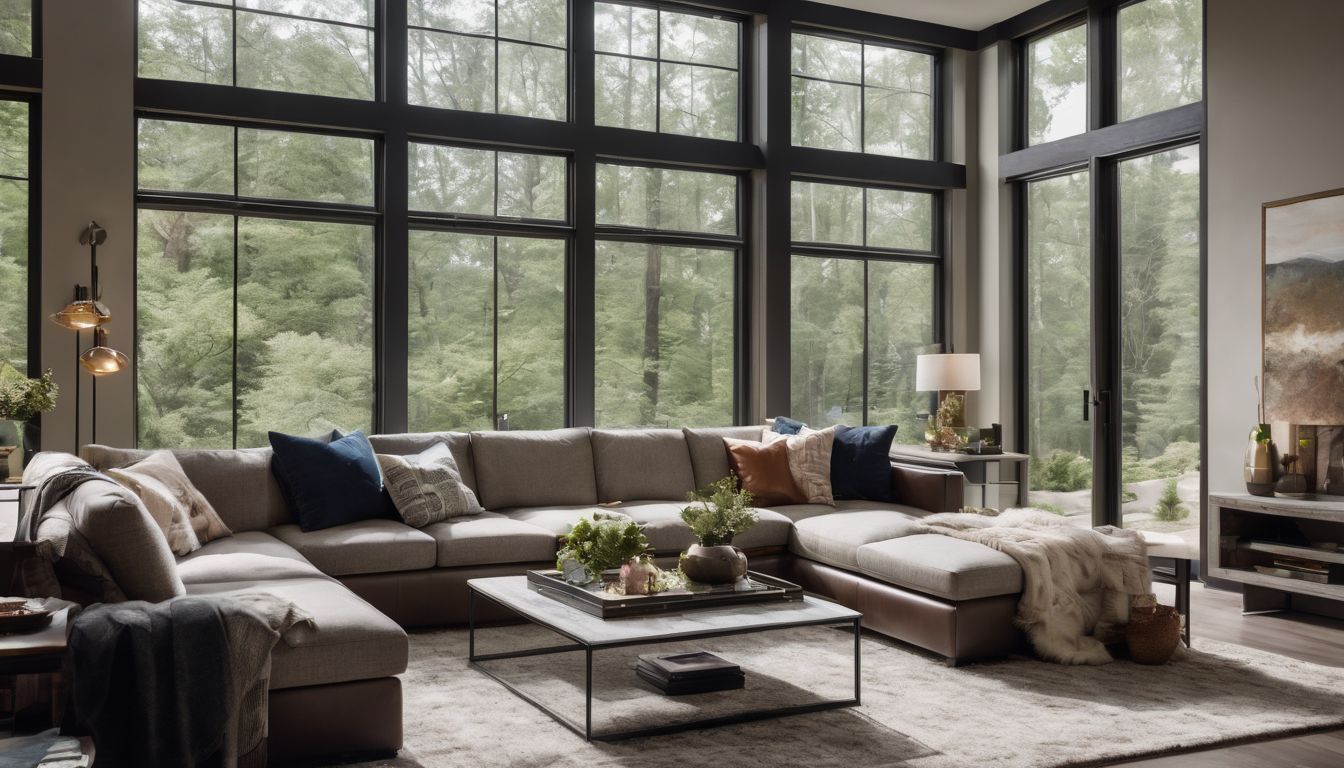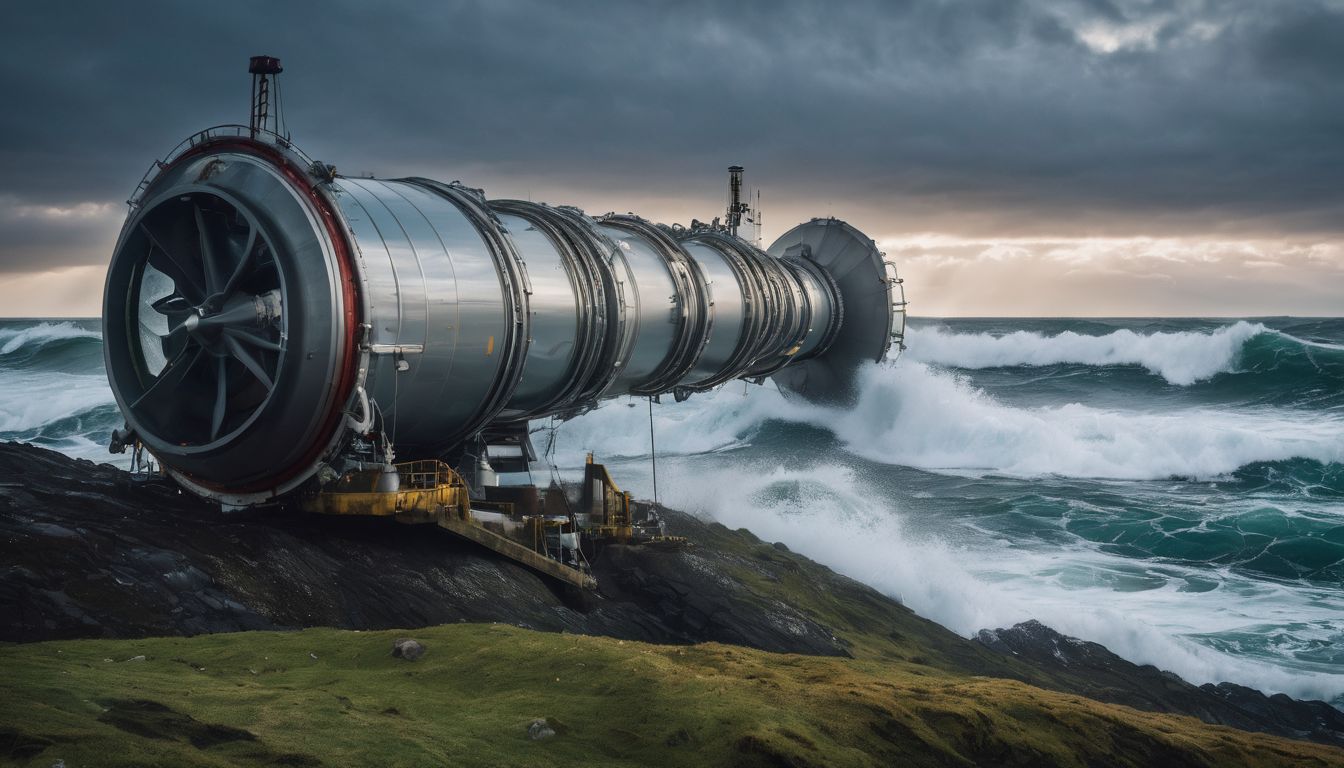Struggling to cut down your energy bills? Older homes are charming but can be costly to keep warm. This guide offers practical tips on boosting your home’s energy efficiency without losing its period charm.
Let’s make savings!
Key Takeaways
- Upgrading to high – efficiency boilers and adding radiator reflector panels in older homes can substantially decrease heating bills.
- Installing loft insulation is an effective measure for conserving energy, as it prevents heat loss, keeping the home warmer in winter and cooler in summer.
- Replacing old lighting with LED bulbs saves on electricity consumption and reduces the need to change bulbs frequently.
- Sealing draughts around windows and doors with weather stripping or caulk is a simple yet impactful way to improve energy efficiency.
- Large-scale improvements like solar panel installation and switching to Energy Star rated appliances offer long-term savings and reduce environmental impact.
Preserving Original Energy-Saving Features of Older Homes
Preserve the original energy-saving features of older homes such as boilers, radiators, chimneys, and loft insulation to maintain their efficiency. These features are part of the home’s historical charm and can contribute to energy conservation.
Boilers and radiators
Boilers and radiators play a crucial role in home energy conservation, especially in older houses. Efficiently maintaining and upgrading these systems can significantly improve your home’s energy performance.
Insulating pipes and bleeding radiators allow for better heat distribution, ensuring living spaces are warm without wasting energy.
Opting for a high-efficiency boiler when it’s time to replace an old one can lead to substantial savings on heating bills. Radiator reflector panels also make a big difference; they redirect heat back into the room, reducing the amount lost through external walls.
Regular maintenance checks keep boilers running smoothly while preventing costly breakdowns that could impact both your comfort and energyefficient home tips.
Chimneys
Inspecting and maintaining chimneys is vital for energy conservation in older homes. Regular cleaning prevents blockages, ensuring efficient ventilation and preventing carbon monoxide build-up.
Installing a chimney balloon blocks airflow when not in use, reducing heat loss. Brick or stone chimneys can be lined with insulation to enhance heat retention and reduce the need for excessive heating.
Upgrading to more energy-efficient fireplace inserts reduces heat loss while providing warmth. Properly maintained chimneys play a crucial role in enhancing energy efficiency, ensuring eco-friendly living without sacrificing comfort.
Loft insulation
Loft insulation plays a crucial role in conserving energy and reducing heat loss in older homes. Adding or upgrading loft insulation can significantly improve the overall energy efficiency of your home, helping to lower heating bills and reduce your carbon footprint.
By properly insulating the roof space, you can create a barrier that prevents heat from escaping, keeping your home warmer in winter and cooler in summer. This simple yet effective upgrade is essential for any environmentally conscious homeowner looking to make their older property more energy-efficient.
Upgrading loft insulation is just one step towards improving the energy performance of an older home; next, let’s explore easy ways to improve energy efficiency through HVAC system upgrades and LED lighting conversions.
Easy Ways to Improve Energy Efficiency in Older Homes
“Upgrading HVAC systems to more energy-efficient models can make a significant impact on the overall energy consumption of older homes. Switching to LED lights and fixing draughty doors and windows are also simple yet effective ways to improve energy efficiency.”.
Upgrading HVAC systems
To improve energy efficiency in older homes, consider upgrading HVAC systems. Installing modern, energy-efficient heating and cooling units can significantly reduce energy consumption.
By opting for systems with high Seasonal Energy Efficiency Ratio (SEER) ratings, homeowners can promote more sustainable living and lower their utility bills simultaneously.
Moreover, replacing outdated HVAC systems with newer models not only enhances home comfort but also contributes to conservation techniques for a greener environment. Upgrading to the latest technology in heating and cooling reduces the carbon footprint of older homes while making them more eco-friendly.
Switching to LED lights
When updating lighting in older homes, switch to LED lights for energy-efficient illumination. LED lights use significantly less energy than traditional incandescent bulbs, reducing electricity consumption and lowering utility bills.
Upgrading to LED lights also reduces the frequency of bulb replacements, saving time and money in the long run. Additionally, LED bulbs produce minimal heat compared to incandescent bulbs, making them safer and more suitable for older fixtures.
By switching to LED lights throughout your home, you can improve energy efficiency while creating a brighter and environmentally friendly living space.
Fixing draughty doors and windows
Transitioning from switching to LED lights to improving energy efficiency through fixing draughty doors and windows, there are several effective measures you can take.
- Replace worn – out weather stripping or add new weather seals around doors and windows to prevent air leaks.
- Caulk any gaps or cracks in the frames of doors and windows to keep warm air inside during winter and cool air in during summer.
- Install storm doors and windows to provide an extra barrier against draughts and improve insulation.
- Consider adding window films or curtains that are designed to block draughts and retain heat.
- Invest in double-glazed or energy-efficient windows to upgrade insulation performance and reduce heat loss.
Utilising curtains, blinds, and shutters
- Utilise thick, insulating curtains to reduce heat loss through windows and keep warmth inside during colder months.
- Install adjustable blinds or shutters to control the amount of sunlight entering the house, reducing the need for air conditioning and saving on energy consumption.
- Ensure that curtains are drawn over windows at night to prevent heat from escaping and maintain a comfortable temperature inside the home.
- Consider using reflective or light – coloured window coverings to reflect sunlight away from the house during hot weather, reducing the need for cooling systems.
- Invest in insulated window treatments to further prevent heat transfer and maintain a consistent indoor temperature.
Finding Financial Support and Resources
Locating financial support and resources for energy conservation in older homes can be challenging, but there are local navigation tools and site search options available to help you.
You can also connect with professionals who can provide guidance and assistance in finding the right resources for your specific needs.
Local navigation
Navigate your way to financial support and resources for energy-efficient upgrades in older homes. Explore local grants, rebates, or low-interest loans available for making eco-friendly improvements.
Connect with professionals well-versed in retrofitting historic houses to harness their expertise and guidance on the best conservational practices. Use site search functions to locate specific information quickly and efficiently without hassle.
Incorporate renewable energy measures into your old home by considering solar panels or other environmentally friendly options. Upgrade electrical systems with the help of professionals who specialise in working with older houses.
Site search
When looking to make energy-efficient upgrades in older homes, conducting a site search for available financial support and resources is crucial. By using relevant keywords such as “energy-saving strategies for older homes” or “ways to save energy in older homes,” you can access valuable information on grants, rebates, and programmes tailored specifically for improving the energy performance of historic properties.
Locating local navigation tools on official websites can lead you to useful resources such as approved contractors and specialists who understand the unique challenges of older home improvements.
In addition, utilising the site search function can help in connecting with professionals experienced in making eco-friendly upgrades to historic buildings. This allows you to obtain expert advice and find skilled technicians who are well-versed in implementing energy-efficient solutions suited for older houses.
Main menu
Accessing the main menu provides a convenient way to navigate through different sections of this guide, making it easier to find the specific information you need. Whether you are looking for tips on preserving original energy-saving features, easy ways to improve energy efficiency, finding financial support and resources, or implementing bigger changes for greater energy savings in older homes, the main menu is your starting point for accessing relevant content quickly and efficiently.
It acts as a central hub from where you can explore various topics related to improving home energy performance and supporting conservation efforts.
Moving forward from the main menu, let’s delve into exploring preservation of original energy-saving features of older homes such as boilers and radiators, chimneys, and loft insulation.
Connecting with professionals
To ensure the best energy-efficient upgrades for older homes, seek advice from experienced professionals who specialise in environmentally-friendly renovations. Consider reaching out to local energy auditors, green contractors, or eco-conscious architects for expert guidance on making your historic home more sustainable.
Engaging with these professionals will provide valuable insights and recommendations tailored to the specific needs of your older property. By collaborating with skilled experts, you can explore innovative solutions such as renewable energy installations and efficient insulation methods that align with your conservation goals.
Connecting with seasoned professionals in eco-friendly renovation can lead to well-informed decisions and cost-effective measures for enhancing the energy efficiency of older homes.
Bigger Changes for Greater Energy Savings
Consider making significant changes such as installing solar panels, upgrading electrical systems, and replacing appliances with Energy Star rated options for even greater energy savings.
Find out more about these impactful improvements by reading the full blog post.
Installing solar panels
Consider installing solar panels to harness the sun’s energy and reduce your reliance on traditional power sources. Solar panels can generate electricity for your home, helping to lower your utility bills and decrease your carbon footprint.
By investing in this environmentally friendly technology, you can take proactive steps towards a more sustainable lifestyle while also adding value to your older home.
Upgrading to solar panels is an effective way of increasing the energy efficiency of older homes, contributing to long-term cost savings and environmental conservation. With advancements in solar technology and government incentives for renewable energy adoption, installing solar panels has become more affordable and accessible than ever before.
Upgrading electrical systems
To further enhance the energy efficiency of older homes, consider upgrading electrical systems. Modernising wiring and outlets can improve safety, reduce electricity wastage, and accommodate the power demands of contemporary appliances.
Installing smart meters and programmable thermostats also contributes to better energy management. Additionally, replacing outdated electrical panels with newer models reduces potential fire hazards while supporting a more sustainable home environment.
Upgrading electrical systems is vital for improving overall energy conservation in older homes. By ensuring that the wiring is up to date and capable of handling modern power needs, homeowners can help minimise energy loss and maximise efficiency throughout their properties.
Replacing appliances with Energy Star rated options
When upgrading appliances in older homes, opt for Energy Star rated options to reduce energy consumption and lower utility costs. Choose from a range of Energy Star rated appliances such as refrigerators, washing machines, dishwashers, and air conditioners to maximise energy efficiency and minimise environmental impact.
- Refrigerators: Select an Energy Star certified refrigerator to save up to 15% more energy than standard models while also reducing greenhouse gas emissions.
- Washing Machines: Upgrade to an Energy Star certified washing machine equipped with advanced technology for water and energy savings without sacrificing performance.
- Dishwashers: Consider replacing old dishwashers with Energy Star models that use less water and energy without compromising cleaning power.
- Air Conditioners: Install an Energy Star certified air conditioner to benefit from improved energy efficiency and reduced electricity bills during the warmer months.
Conclusion
Improving energy efficiency in older homes is essential for reducing environmental impact and cutting costs. Upgrading appliances, fixing draughts, and utilising curtains are simple steps that can make a significant difference.
Taking advantage of financial support and resources can help make bigger changes more manageable. Ultimately, by making small adjustments and considering larger upgrades, we can transform older homes into eco-friendly spaces that have a lower carbon footprint.
FAQs
1. What are some energy-saving strategies for older homes?
You can save energy in older homes by adding weatherisation, like insulating walls and ceilings, and updating to energy-efficient home upgrades such as double-glazing windows.
2. Can old homes be made more environmentally friendly?
Absolutely! Making an old home more eco-friendly involves implementing tips for energy conservation, such as using LED light bulbs and sealing draughts to prevent heat loss.
3. How do I improve my old house’s energy efficiency without losing its historic charm?
Carefully select energy-efficient improvements that respect your home’s character, like fitting unobtrusive draught excluders or choosing period-style ecofriendly upgrades.
4. Are there specific ways to increase the energy performance of older buildings?
Yes, you can increase the energy performance in older buildings by adopting energysaving measures like upgrading to a high-efficiency boiler or installing proper insulation.
5. What benefits do ecofriendly upgrades bring to an old home?
Eco-friendly upgrades make your house use less power leading to lower bills; they also reduce your impact on the environment and can make living spaces feel more comfortable.





